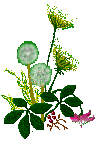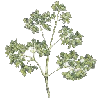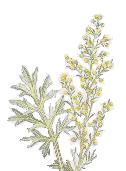
 Companion Planting
Companion Planting


 Chives
cures blackspot on roses, deters greenfly and Japanese beetles and grow
strongly when planted between the bushes, making an attractive semi-groundcover
with rosy-pink flowers. Chives discourage insects climbing fruit trees and
mildew on cucumbers. Good companion with carrot, grape, parsley and tomato.
Chives
cures blackspot on roses, deters greenfly and Japanese beetles and grow
strongly when planted between the bushes, making an attractive semi-groundcover
with rosy-pink flowers. Chives discourage insects climbing fruit trees and
mildew on cucumbers. Good companion with carrot, grape, parsley and tomato.

 Apple
grows well with chives and nasturtium but poorly with potatoes.
Apple
grows well with chives and nasturtium but poorly with potatoes.

 Garlic
has a pungent aroma which is useful in deterring many insects. Rabbits do not
like the aroma so keep this in mind if they are a problem for you. Garlic also
has the effect of cleaning up the soil and disinfecting it.
Garlic
hates strawberry, beans and peas but is a good companion with carrots, roses
and tomatoes.
Garlic
has a pungent aroma which is useful in deterring many insects. Rabbits do not
like the aroma so keep this in mind if they are a problem for you. Garlic also
has the effect of cleaning up the soil and disinfecting it.
Garlic
hates strawberry, beans and peas but is a good companion with carrots, roses
and tomatoes.

 Parsley
is excellent planted near tomatoes, carrots, chives and roses.
Parsley
likes asparagus also and is a control for asparagus beetles.
Parsley
is excellent planted near tomatoes, carrots, chives and roses.
Parsley
likes asparagus also and is a control for asparagus beetles.

 Thyme
is said to help repel the cabbage root fly, cabbage worms, cabbage loopers and
whiteflies. Good companion with all plants in general.
Thyme
is said to help repel the cabbage root fly, cabbage worms, cabbage loopers and
whiteflies. Good companion with all plants in general.

|
Please Sign
my Dreambook ..
Please Read my Dreambook! |
|